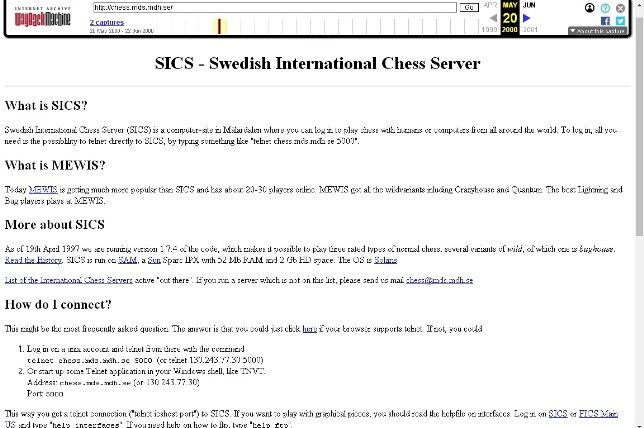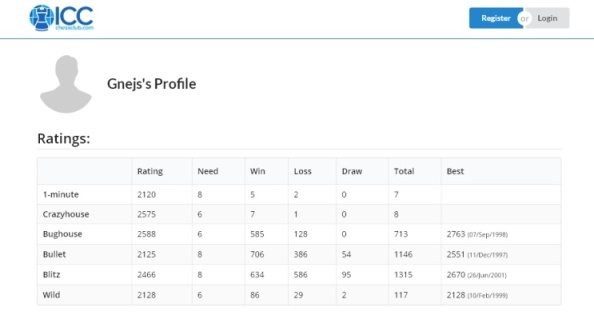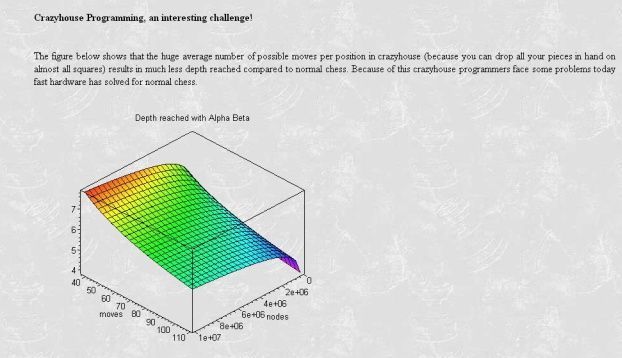First History of the House

The history of Crazyhouse is still a mystery, trying to find traces of the game, in the past we have too little evidence. All that we know is the influence of Japanese chess shogi. In most countries, the game can be known as a random variation, but it is not widely used. Bughouse is a popular option in many countries, but its exact origin is unknown.
We do not know anything about the first players of Crazyhouse. With the advent of the Internet, the game was reborn - we collected a lot of materials on game theory, engine programming and the search for effective training systems.
We call it zh - it happened from the old legendary server, it was the team in the console to find the game.
"The Encyclopedia of Chess Variants" by David Pritchard game has different names

Ralph Betz is the inventor of many chess variants. We can consider him the author of the title of the game. A link to Prichard can also be found in the article about Chessgi
In the sixties, Bughouse appears and, as you might say, we can find references to the Double Bughouse chess in the 70s.
Publications in the press are very rare - the only publication I know of is the article by Nick Long in 2002 in Chess Life (the USCF magazine publication).

On his website, Nick Long tells the story of Crazyhouse's appearance on the Internet, this is of great interest. Separately, he tells the story of Internet chess, the history of long-disappeared servers.
"Prior to MEWIS-2, there wasn't an automated way to play crazyhouse on an ICS server. You could play an odd game of bughouse with each player logging into the ICS twice, or actually using a strange chess engine that was designed to allow crazyhouse play on unrated games by simply setting up a position where each player on the other board would immediately give to the player what they had just captured on their board. Unfortunately, the names of such engines have been lost to time (or at least as far as my memory serves me). Another option would have been to use the bsetup option, which is rather clunky and only works as untimed games.
MEWIS-2 is the Mid-East Wild Internet Server 2 (MEWIS). The new generation will find it hard to believe this. But the resource was "more popular", collecting 20-30 players online.

You will not find this in web archives. Part of the history of Crazyhouse can restore people.
Screenshot of the missing Russian site, which was Fischer Random Bughouse
After the first chess server in history, Crazyhouse had less fame than Bughouse. People accidentally came to the option. The game has not been studied yet, she did not have a theory. This could be the application of ideas from the first books about Bughouse in the 1990s.
The heyday of the game began in the late 90's after the appearance of the option for ICC called Wild 23
https://web.archive.org/web/19990501121939/http://www.chessclub.com/help/crazyhouse
Andre Nilsson known as Gnejs remained a legend for the first generation of players.

This name was also used later Andre Nilsson from Sweden for FICS. It was also one of the first theorists of Bughouse, who was a commentator for the work "TOP TEN WAYS, TELLING YOU TO BE A BAD PARTNER"
In ICC, you can find the highest ratings of Crazyhouse & Bughouse in server history.
But the first generation of FICS - JKiller, pminear, Gnejs, WhoAmI, Dragonslayr, tantheman, Bugzilla, Cren, CDay, Tecumseh, YScorpion, RubberDuck, FireFly, VABORIS, GusMcClain, Intoxicated, Supergrover, beuki, Foxbat, Chessti, volcano, Terrapin. They were both players and creators of the first computer engines Crazyhouse and gaming bases.
The base of FICS games begins in 2008. Finding early games is extremely difficult - there are no archives, except for some private collections.
The Crazyhouse remained in the shadow of Bughouse for a long time. Between them there are many differences - grandmasters can play zh and will be annoyed by ideas Bug. And there are just as many pederasts who do not accept "more chess" games. This is a good example of a postmodern vision. The reason for the abnormal character for many players is even more anomalous and "wrong". In this sense, the origin of the word "bugger" is interesting.

Sometimes it resembles a chess counterculture.
No one else can do what you do.
To date, several books have been published about Buguz. You can try to understand the philosophy of Crazyhouse in an interview with JannLee in 2016 -
"Strategically it’s the same – I’m not aiming for an edge in the opening, but rather avoiding being worse, while hopefully putting my opponent in unknown territory. If that takes me into unknown territory as well, then all the better. I’m not a great fan of theory and study – my preference is to enjoy playing the game on the board with a pure clash of talent, rather than outside the board with prior knowledge."
Crazy props are well studied in articles crosky, as well as in what are called "tricks" in the circle of players. Many of them are recognizable intuitively, the main crazy combinations. This is a separate "theory of chaos."
You can open the book anyway. Classification of debuts at the initial stage - reviews of the group by known lines. Many players have their own research.
The new birth of Crazyhouse in 2016 occurred on lichess.org and chess.com, where Bughouse was also implemented. One of the strongest crazy players in the world and the commentator of the game for chess.com is Grandmaster Yassir Seirawan.
One of the best world players mastertan presents Light & Dark in his work: visual guide to Crazyhouse own unique system.
We can also thank chess.com for the opportunity to see an understanding of such outstanding players as Hikaru Nakamura.
Crazyhouse becomes a place of strength.